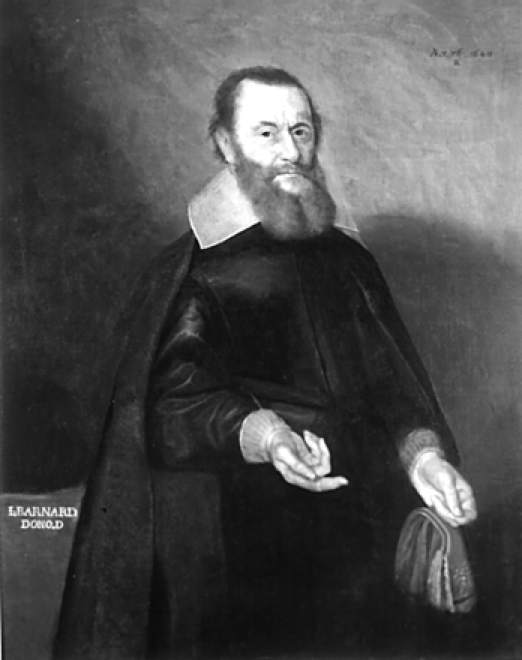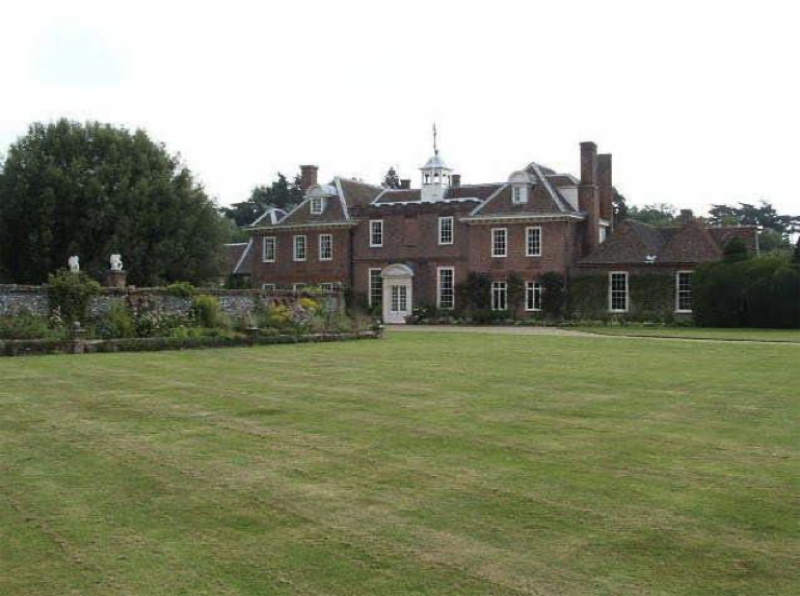Gideon De Laune (1565-1658)

Born in Nimes, France in 1565, Gideon was the first son of William De Laune who was born in Normandy around 1530 and Katherine des Loges. William spent eight years studying medicine in Paris and Montpellier under the leading professors of physic at the time. Not only was Montpellier’s medical school regarded as one of Europe’s best, the city was a major centre of the French Reformed Church. After completing his studies there, William became an ordained minister of the Reformed Church in 1558
in addition to his practice of physic. His wife Katherine was the daughter of another Reformed Church minister in nearby Uzes. When his father-in-law died, William took on the financial burden of two families and was forced to move back to Normandy to concentrate on his physic work. Gideon was aged seven when, after the St Bartholomew’s Day massacre, the family fled France landing with many others at Rye, East Sussex.
Rye was the largest port in Sussex in the late 16th century and a major destination for those fleeing religious persecution. By 1582 more than half the population, some 1500 people, were Huguenots, but thousands more had passed through the town in the preceding decades, most moving on quickly to other places such as London, Canterbury, Southampton and Norwich. The numbers were so great at times they put such a strain on the town’s resources that appeals for provisions were sent to the Queen.
By 1575 William had moved the family to London, to live in the precinct of St Anne’s Blackfriars, within the Liberty of Blackfriars, an area noted for its mixed population that included aristocratic Englishmen, highly skilled foreign artisans and a large sub-community of French protestants drawn to the area both by the freedoms it offered its inhabitants and its record of freedom from anti-alien violence. Blackfriars’ Liberties, inherited from the old Dominican friary, included freedom from arrest by City of London officials within the precinct, exemption from City taxes, freedom to practice crafts and trades without Guild memberships, freedom from searches except by Liberty constables and freedom from serving in City offices. Whilst rejecting the City’s interference or involvement in their affairs, the Liberty remained subject to the authority of the Crown, Parliament, and the Bishops of London. From its beginning the parish was a Puritan stronghold.
William leased a messuage (a combination of dwelling house, outbuildings and adjacent land) for his growing family. Gideon chose not to follow his father into medicine, but turned to apothecary instead although there is no record of him serving an apprenticeship to an English apothecary and it is thought that he learnt his skills from his father and other friends. As they became more assimilated into their life in England, the De Laune family attended and served both the French and English church.
About 1589, Gideon married Judith Chamberlen, cousin of Peter Chamberlen who invented obstetric forceps and daughter of Henry Chamberlen, gent. Gideon and Judith went on to have many children (17) including Abraham De Laune, Peter De Laune, Isaac de Laune, Gideon junior and William De Laune although many of his children were stillborn or died in infancy.
Gideon De Laune continued to prosper, becoming apothecary to Ann of Denmark, Queen of James I and practising from a shop at Blackfriars, making his name and fortune from the manufacture of De Laune’s Pills, a nostrum recommended for scurvy, dropsy, jaundice, venereal disease, worms, etc.
Gideon’s younger brother, Paul De Laune who was a native of London was educated at Emmanuel College, Cambridge and after further study became a member of the College of Physicians in 1615. He went on to become the physician-general to the fleet under Oliver Cromwell, sailing to Hispaniola and Jamaica. Sadly, nothing further is known of his history or fate and it is thought that he died at sea in December 1654.
Due to the success of his apothecary business Gideon was able to purchase several properties – an estate in Roxton, Bedfordshire, a manor house in Sharsted, Kent and a mansion in Blackfriars, plus extensive properties in Virginia and Bermuda.
In 1617, Gideon helped lead a breakaway group from the Grocers’ Company to raise the status of apothecaries in general practice and the King decided to incorporate the Society of Apothecaries and 114 apothecaries, including Gideon, were nominated as members. Gideon served as junior warden in 1624, senior warden in 1627 and was master in1637. He became a great benefactor to the public and was much involved in the foundation of the Apothecaries’ Hall in Blackfriars where a white marble statue of him can be seen to this day. There is also in the Hall a portrait of him in oil, supposed to have been painted by Cornelius Jansen. There has been a series of lectures since 1960 in the Faculty of Medicine and Pharmacy named the ‘Gideon De Laune Lecture’ in honour of the part that Gideon played in forming the independent City Livery Company.
Gideon lived piously to the age of 89 years and was buried under the stone in the porch of St Anne’s Church, Blackfriars, even leaving £1000 in his will to cover the cost. He bequeathed his estate with his only two surviving children Abraham and Ann and his grandchildren and Sharsted House passed down the family until in in 1966 the Court came into the possession of Canon Wade and his son Anthony Wade whose family included Virginia Wade, Wimbledon tennis champion in 1977. As of 2007, the house remains in the hands of the Wade and Shepley families who have undertaken extensive restoration of the house and gardens.

Like many other Huguenot refugees, Gideon De Laune left an indelible mark on the lives of his adopted English country.
References:
National Dict of Biography
Acknowledgements F.N.L. Poynter’s Gideon DeLaune and his Family Circle has been the main point of reference for any study of Gideon DeLaune’s life since it was published after he had delivered the Gideon DeLaune Lecture at Apothecaries’ Hall on 23 April 1964.
Ancestry.com
Google searches
